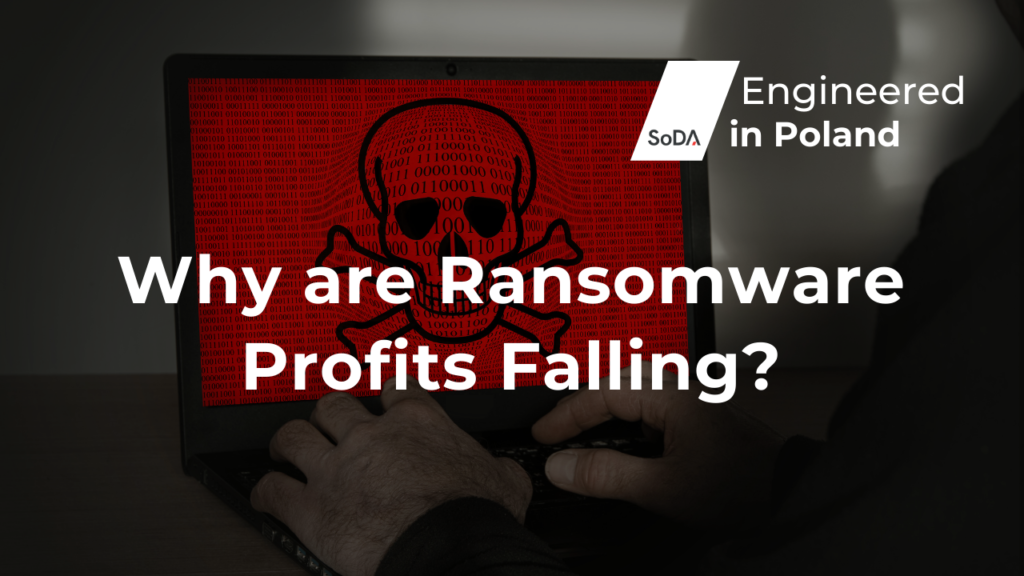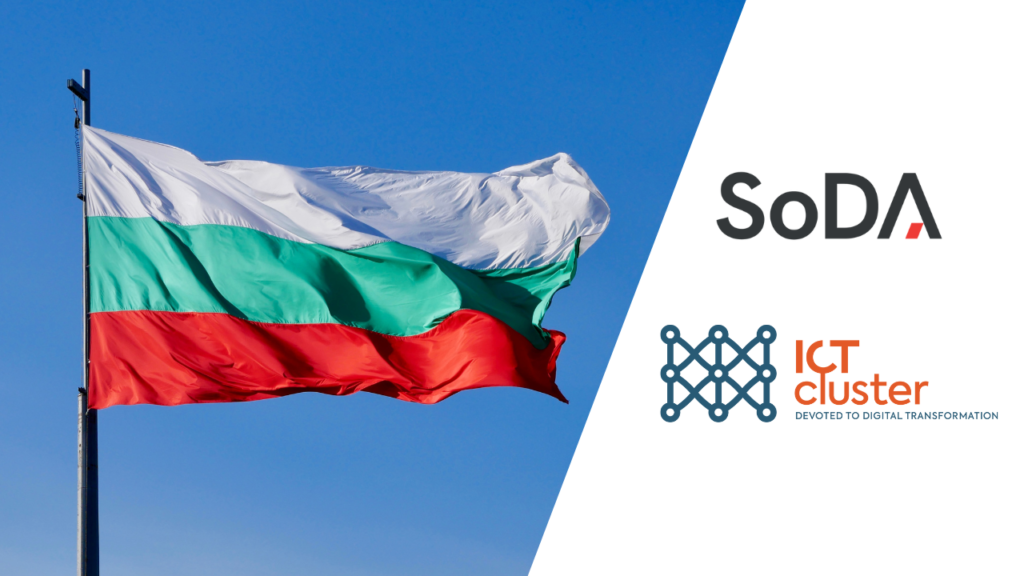The IT market in Poland is currently worth over USD 6 billion and is growing by approximately 6% annually. Such growth brings a significant competitiveness of the industry, so the success of individual companies is largely determined by the ability to find appropriate business advantages. In this article I will try to present one of the methods to achieve such an advantage — it is a workshop tool known as a discovery session.
Who needs this anyway?
First of all, it is worth answering the question of who is the main beneficiary of this approach. Well, by the long shot is definitely the user, because the analytical and critical approach to the investor’s assumptions and business models is more likely to translate into benefits for the target consumer. But this approach brings additional benefits to the investor and supplier, in this case the software house. The possibility of verifying the first assumptions and business concepts, even before the start of the project, as well as learning the prospect of a potential customer on the one hand gives the opportunity to change the approach to investment in advance, and on the other the selected supplier (or the one who is just trying to obtain a contract) get the opportunity to appear as a responsible and creative business partner.
A similar role at the beginning of every major project is played by BI experts on the supplier’s side, but their perspective is slightly different — they are expected to translate the client’s business requirements into specific functionalities that can be implemented in the selected technology. The task of UX designers implementing the discovery session workshop is, in turn, a broader view of the entire context of the use of the application and the possibilities that it will offer to the end user.
How to start?
The discovery session aims at several tasks, but the main ones are worth mentioning:
- Leveling the knowledge about the project — over 10 years of experience in working with clients shows that it is crucial to achieve the intended results, and that the client throughout the entire project implementation process feels that everyone is going in the same direction; in other words, this stage eliminates any understatement at the start. In addition, such a session at the beginning of the project allows you to know all the restrictions of the project on the investor’s side, which otherwise might not have been articulated before the start of the project.
- Clarifying the definition of the target group — regardless of whether the new project is an innovative start up (although in this case this stage is a must-have) or the project is about redesigning the current application or website.
- Verification of business and functional assumptions in the context of responding to the real needs of the user — a business that responds to the real expectations of its target group has an immeasurably greater chance of success and that is why it is so important at the very beginning to decide which assumptions are potentially desirable and which may result from a cognitive bias of the investor.
- Risk management — on paper, most ideas seem sensible, and in total all amounts add up, of course, in plus, but only the collision with the actual state of competition, consumer needs and the current market situation gives knowledge and the opportunity to make rational business decisions. At the discovery session stage, you can determine with the client a sensible scope for a MVP version, which on the one hand will implement key business assumptions, and on the other hand will act as a specific litmus test, determining the correctness of the assumptions and business plan.
There is one more goal that you sometimes forget in the context of looking for reasons to implement the discovery workshop and its benefits. It is, without a doubt, a desire to verify that all people in the client’s organization involved in the project perceive it in the same way. Sometimes, the discovery workshop is the first place and opportunity to stimulate a lively discussion in the team on the client’s side, which can sometimes overturn all original assumptions.
Achieving the abovementioned goals is possible if you are properly prepared for such a workshop, which also requires the participation of the right people from the investor. Such a group usually includes:
- Product owner — it can be a dedicated role or business owner; it is important for the seconded person to have comprehensive knowledge about business and its goals, and to be empowered to make strategic decisions
- Marketing representative — such a person will be able to talk about the project from the point of view of long-term action plans and business goals in the context of market features and brand communication
- Domain expert— when the project on the investor’s side is complex and implies specialized solutions, an important role in the discovery workshop is a person who has answers related to the project’s specialization
- Future system operators — when the designed solution will be managed by dedicated people on the investor’s side, it is also worth listening to their views, because a well-designed system will increase the efficiency of the indicated people. Otherwise, the implementation of repetitive tasks in a system that is not intuitive for them may be associated with financial loss.
Protip: a good addition to the discovery workshop is the inclusion of elements of a technology workshop, allowing, for example, to discuss the project with third-party investor suppliers; it allows to identify and eliminate potential problems of integration, selection and refinement of the best technology from the point of view of goals.
How to deliver?
Before the pandemic time, discovery workshops were usually carried out at the clients’ premises (for their convenience) or at the supplier’s premises, because sometimes the client prefers to contract the time of the entire team only for the workshop, without any distractors in the form of current work.
However, nothing prevents such workshops from being carried out remotely, which is currently the only proper form at the present time. Workshops can be carried out using dedicated tools (Mural, Miro) or using public messengers such as Zoom, Hangouts, Skype. However, it should be remembered that conducting workshops remotely differs from face-to-face meeting. Here are the differences to keep in mind:
- Online meetings should be much shorter than those conducted directly — even a whole business day works well in the case of a live meeting with a client, but 4h is rather the upper limit for most clients in the case of a remote workshop
- The potential lack of observation of the client’s behavior and attitude during the workshop means that the meeting agenda and exercise sets should be carefully thought out and planned, because in this version of the workshop there is extremely little space and time for improvisation.
Regardless of the form of the workshop meeting, it is worth remembering that the client-side team does not count more than 5 people. Otherwise, it will be much harder to manage the discussion and team work, and extended, multi-threaded client’s discussions may prevent you from reaching a clear consensus.
When do you might need it?
As mentioned above, the discovery workshop should take place before starting the project, because it provides a kind of foundation for arrangements according to which the client’s and supplier’s teams will work together. Practice shows that this type of workshop is great as a start of official cooperation, but it can be successfully used as a competitive advantage when investors are not yet determined on a specific supplier. Offering a discovery workshop (it should almost never be a free service) before starting cooperation with the investor also gives you the opportunity to learn about 3 key aspects of a potential project:
- Position of the offer of a supplier — if the customer is not willing to spend 5% -10% of the planned budget to recognize the possibilities and risks of project implementation, then such a supplier is usually not seriously taken into account;
- Investor’s budget — analogous situation, with the difference that this time we check how seriously the client thinks about the project itself;
- Substantive preparation — here, thanks to this approach, we can check how well the client is prepared to launch the project in general. The unwillingness to participate in such a workshop due to the lack of a sufficient level of knowledge in the organization gives, in theory, 2 possibilities — postponing the potential cooperation until the client accumulates the necessary knowledge (there are not many worse scenarios than the one in which the client wants but does not know what) or expanding such a workshop and arranging the foundations for the project together with the client. From my perspective, the second option is highly time-consuming and therefore financially ineffective, because the supplier will almost never know as much about the customer’s business as he himself, ergo will not be able to be an equal partner (exceptions here are sometimes start-ups).
In addition to the workshop features mentioned above, the benefit directly from offering such a design approach is also difficult to overestimate — a supplier who knows that he needs to learn more is usually much more valued by the investor than the one who rather blindly estimates and assumes.
Is it worth it?
It’s definitely worth it, and should be done whenever possible.
Summing up all aspects of the implementation of discovery workshops, we can divide them into two groups depending on the perspective — customer and supplier:
1. Client’s perspective
- Possibility to clarify business assumptions in transferring to the user’s context — some ideas look good only on paper and it is worth having someone from the outside falsify them
- The clash of the investor team knowledge with expert and domain knowledge — the resultant of these two areas can save a lot of time, money, and probably saved many a business from missed investments
- Hierarchy and ordering of activities due to the available budget and schedule of activities
- Understanding the supplier’s facilities and team, accelerating the implementation of cooperation methodology and communication principles
2. Supplier’s perspective
- Better understanding of the client’s business and its capabilities (and threats)
- Articulating project threats and risk management in advance
- Working out a compromise in necessary areas (on the budget-deadline line)
- Possibility to select potential subversives in the project
- Establishing deeper relationships with the client and standardizing the principles of cooperation
In summary, it should be mentioned that the discovery workshop is a comprehensive tool which role is not limited to determining the scope of the project, but also applies as a means of establishing deep business relationships and helps in project risk management.
What’s more, convincing your client of the added value of implementing such a workshop shows not only the professionalism of the supplier, but also his commitment, which translates in plus and may constitute additional “points” when choosing the software house.
Article was written in cooperation with Nikodem Krajewski / https://medium.com/@nkrajewski)/, CEO of Ideacto / (https://medium.com/ideact)/



